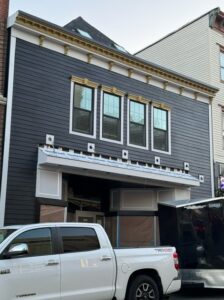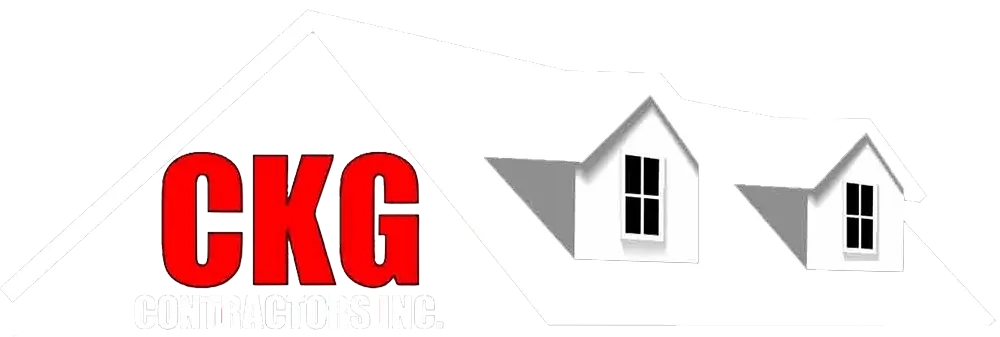
If you are lucky enough to own a historic home, it is important to choose the right roofing material to maintain its character and style. Many older homes were built with slate or tile roofs, which can be difficult and expensive to repair or replace. If you are looking for a more affordable option, consider a metal roof. Metal roofs come in many different styles and colors, so you can find one that will match your home’s aesthetics.
An important part of historic home restoration is getting the roof right. While architecture and design come first in many cases, a good restorer will not overlook this critical aspect for anything else below it – from insulation to stored objects like furniture or books; if you have something that needs protection against water intrusion then your house doesn’t deserve its own history!
For homeowners with historic homes, water intrusion and rot are two major concerns as they can cause extensive damage to the home. Fortunately for these owners, there is a solution that will keep their properties safe from unnecessary enhancements or costly repairs; it just requires consistent maintenance practices on your part!
If you want to keep your historical roof in good condition, it’s important that the style and material are appropriate for its age. It will take significant work – to conduct regular inspections with qualified professionals who know these old techniques!
Restoration experts know that installing a modern roof on your historic home can be in the best interests of both property and budget. The new roofs provide superior protection with fewer maintenance costs, which will also increase their value if chosen properly by these professionals who specialize in such things!
Roof Repair in a Historic Building
When it comes time to repair your historic home’s roof, you’ll want an expert by your side. The steps involved in a project like this are as follows:
1. Search for a Roofer with Experience
Historic roofs are a specialty of the trade and it is important that you find an expert who specializes in this area. Ask around for contractors or artisans with experience working on old buildings, as even if they have dealt with other materials before their time may come to work on your property’s particular type of construction material!
When you’re looking for a roofer to take on your historic roof restoration project, be sure to find one with experience. This is not the time to hire someone who is just starting out in the business!
Check reviews and ask for referrals from friends or family members who have had similar work done in the past. Once you’ve found a few qualified roofers, be sure to get bids from each one.
Choosing the right roofer is critical when you are repairing your historic home’s roof. Make sure to find someone with experience who can give you a good bid. Also, check reviews and ask for referrals from people you know. Once you have found a few qualified roofers, you can then choose the one you want to hire.
2. Assessment of the Damage
After you’ve found the right roofer, they will need to assess the damage to your historic roof. This is a critical step in the repair process, as it will help determine what needs to be done and how much it will cost.
The roofer will also need to take into account the type of materials used in your historic home, as well as the age of the roof. They will then be able to give you a more accurate estimate of the repairs that need to be made.
Once the roofer has assessed the damage, they will be able to give you an estimate of the repairs that need to be made. This is an important step in the process, as it will help you determine the cost of the repairs.
Make sure to ask the roofer about the materials they will be using for the repairs. You want to make sure that they are using materials that are appropriate for your historic home.
3. Research the Right Materials
After the roofer has given you an estimate, you will need to research the materials that they will be using for the repairs. This is important, as you want to make sure that the materials are appropriate for your historic home.
You should also ask the roofer about any warranties or guarantees that they offer on their work. This is important, as you want to make sure that the repairs are done correctly and that you are covered in case of any problems.
Choosing the right roof for your historic home is a critical decision. You want to make sure that the roofer has the experience, and that they are using materials that are appropriate for your home. Be sure to ask about warranties and guarantees before you hire them. This will help you make sure that the repairs are done correctly and that you are covered in case of any problems.
4. Repairs and Maintenance
Once you’ve chosen the right roofer and materials, the repairs will need to be made. This is a critical step in the process, as you want to make sure that the repairs are done correctly.
The roofer will also need to provide you with instructions on how to properly maintain your roof. This is important, as you want to make sure that the repairs last for a long time.
Choosing the right roofer and materials is critical when repairing your historic home’s roof. Make sure that the repairs are done correctly and that you understand how to properly maintain your roof.
The best time to repair historic roofing materials is when it’s mild weather because this will prevent any corrosion from occurring. Your team needs the appropriate substitutes for original materials, which should look identical and be compatible with other items on your property as well!
5. Documentation
After the repairs have been made, you will need to document the work that was done. This is important, as you want to make sure that the repairs are covered by your insurance.
You should also keep a record of the receipt from the roofer, as well as any warranties or guarantees that they offer. This is important, as you may need to refer to them in the future.
The roofers are legally obliged to document their work for future generations. This means that the restoration process isn’t complete until every detail has been properly accounted for in writing or photography, and any photographs taken should show all areas of interest during this time period.
Choosing a New Roof for a Historic Home
When it comes to choosing a new roof for a historic home, there are many factors to consider here.
1. Wood Shingle Roofs
If you’re looking for a roofing material that will last your home longer than most, wood shingles roofs are exactly what’s needed. They can be made from cedar or oak and come in different shapes like sellar ( expands outward when wet) gables. Shingles were America?”s the first choice because they had an easy installation process; all one has to do is shake them off their excess moisture after installing then nail down the Strip Light.
If your historic home has a wood shingle roof, then you will want to consider replacing it with a new one. Wood shingle roofs are susceptible to damage from weather and insects.
They are also not as fire-resistant as other types of roofs. If you live in an area where wildfires are a concern, then you may want to consider a different type of roof.
Wood shingle roofs are susceptible to damage from weather and insects. They are also not as fire-resistant as other types of roofs. If you live in an area where wildfires are a concern, then you may want to consider a different type of roof.
2. Slate Roofs
Slate roofs are a good option for historic homes. They are durable and fire-resistant. Slate roofs can last for many years, but they are also very expensive.
If you are considering a slate roof, you will need to make sure that your home can support the weight of the roof.
Slate is not just a popular material for kitchen countertops, but one that has been around since the 1700s. It’s durable and can last 100 years or more with proper care!
Americans started getting their slates from quarries following Civil War ended which varied greatly in quality as well- some would be decent enough to use on your house today while others might need to be replaced after only 5–10 years because they were poor quality pieces. You’ll find slate used in homes all across America; whether it’s French chateau-style houses, colonial-era buildings, etc.
3. Metal
Metal roofs are a great choice for homes with cabins, cottages, and bungalow-style designs. They can last up to 75 years!
Copper is one of the most historically popular metals for roofs, with copper rolls and sheets being used in the late 17th century. Like slate it’s expensive but lasts over 100 years – commonly found on monumental buildings like churches or mansions; sheet metal was also common around 1800s homes which now have become trendy again recently due to its simple designs featuring stamped patterns reminiscent of tin shingles that were often featured then too.
Sheet-metal roofs are one of the most common types found on homes today. They’re also an invention that can be attributed to our country’s first major period in innovation, during which time they were manufactured out by factories as tiny sheets or short lengths before evolving into longer rolls with seams down their length (which is how we know them).
Metal roofs are so cool and fashionable these days, with a wide range of colors to choose from. If you want yours done up in style then we recommend stainless steel or an aluminum/zinc alloy – either one will be sure not only last but also look good doing it!
4. Clay Tiles
Clay tiles are a defining characteristic of the Mission and Spanish Colonial styles, which gained popularity in America during the 20th century. The use of these historic designs can be seen across many parts country with Germanic settlers creating them from North Carolina to New York State where they had been brought over by Spain centuries ago; this is also why we have round or s-shaped terra cotta tiled floors today!
Clay tiles are beautiful and can last a long time, but they are also very fragile. Clay tiles can be easily damaged by hail or high winds. If you live in an area with severe weather, you may want to consider another type of roof.
If you have a historic home, you have many choices when it comes to roofing. You can choose a roof that is durable, fire-resistant, and long-lasting. You can also choose a roof that is beautiful and stylish. Whatever you decide, make sure you do your research to find the best option for your home.
Conclusion:
Choosing the right roof for your historic home is an important decision. You will need to consider the style of your home, the climate, and your budget. There are many options available, so make sure you do your research to find the best option for your home.




